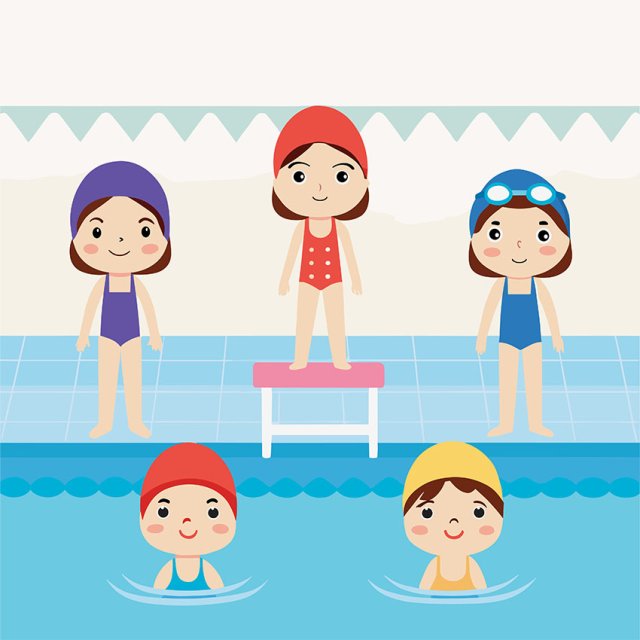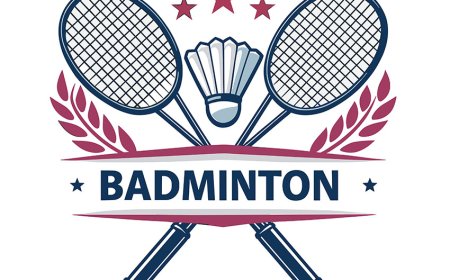Swimming: History, Rules, Famous Swimmers, and Fun Facts for Students
Discover swimming’s rich history, techniques, and benefits. Learn about famous swimmers, types of strokes, and how this sport helps you stay fit.

🏊 Swimming: The Sport That Builds Strength, Speed, and Confidence
🎯 Introduction
Swimming is one of the world’s oldest and most popular sports. From ancient cave paintings in Egypt to Olympic races today, swimming builds fitness, confidence, and water safety. Whether racing in a pool or crossing open water, it challenges your whole body and mind.
🏛️ History of Swimming
Ancient Times
- Cave paintings in Egypt over 7,000 years old depict swimmers.
- Greeks and Romans included swimming in military training.
- Japanese swimming races date back to the 1st century BCE.
Modern Swimming
- Competitive meets began in England in the 1800s.
- First Olympic swimming events took place in 1896.
- Women’s Olympic swimming debuted in 1912.
- Today it’s a core sport at the Summer Olympics and Paralympics.
🏊 How Swimming Is Practiced
The Pool
- Long course: 50 m × 25 m lanes.
- Short course: 25 m lanes.
Equipment
- Swimsuit, goggles, swim cap.
- Kickboard & pull buoy for drills.
Basic Rules
- Stay in your lane.
- Touch wall at each turn & finish.
- No false starts.
- Obey stroke-specific technique rules.
🏊♀️ Main Strokes
- Freestyle (Front Crawl): Fastest stroke with alternating arms & flutter kick.
- Backstroke: On your back, alternating arms & flutter kick.
- Breaststroke: Simultaneous arm pull & frog kick; double-hand touch at turns.
- Butterfly: Both arms move together with dolphin kick.
- Individual Medley: Combines all four strokes in one race.
🧬 Classification & Scientific Background
Classification: Individual & relay sport, water-based, non-contact.
Biomechanics: Requires endurance, strength, coordination, flexibility.
Exercise Science: Enhances cardiovascular health, muscle strength, lung capacity.
Psychology: Develops focus, discipline, confidence.
🏅 Events & Distances
- Sprints: 50 m, 100 m.
- Middle distance: 200 m, 400 m.
- Long distance: 800 m, 1500 m.
- Relays: 4×100 m & 4×200 m teams.
- Open water: 5 km, 10 km, marathon swims.
🏆 Major Competitions
- Olympic Games (every 4 years)
- World Aquatics Championships
- European Championships
- Pan Pacific Championships
- Paralympic Games
🌍 Swimming Around the World
- Australia: Legendary swimmers & clubs.
- USA: Olympic powerhouse.
- China: Rapidly rising talent.
- Europe: Strong programs in UK, Hungary, Sweden.
⭐ Famous Swimmers
- Michael Phelps (USA): 23 Olympic golds.
- Katie Ledecky (USA): Dominant distance champion.
- Ian Thorpe (AUS): “Thorpedo,” five Olympic golds.
- Missy Franklin (USA): Four-time Olympic gold medalist.
- Adam Peaty (GBR): Breaststroke world record holder.
- Sarah Sjöström (SWE): Butterfly & freestyle star.
💪 Benefits of Swimming
- Full-body, low-impact workout.
- Improves heart & lung health.
- Increases flexibility & balance.
- Reduces stress & builds confidence.
- Teaches vital water safety skills.
🌟 Interesting Facts
- Butterfly stroke became official in 1952.
- Swimmers can lose up to 3 L of sweat per hour.
- Oldest strokes are breaststroke & sidestroke.
- Olympic pools hold about 660,000 gallons of water.
- Shaving body hair reduces drag in races.
🧠 Kid-Friendly Summary
Swimming is racing or playing in water using four main strokes: freestyle, backstroke, breaststroke, and butterfly. It’s been around for thousands of years and is now an Olympic sport. Swimming makes you fit, confident, and safe in water. Champions like Michael Phelps inspire kids to jump in and start swimming!
✨ Key Takeaways
- One of the oldest sports—found in 7,000-year-old cave art.
- Four main strokes: freestyle, back, breast, butterfly.
- Events range from 50 m sprints to 10 km open water.
- Benefits include fitness, confidence, and water safety.
- Legends like Phelps and Ledecky hold multiple records.
📖 Vocabulary Words
| Word | Definition |
|---|---|
| Freestyle | The fastest stroke, also called front crawl |
| Lap | One length of the pool |
| Relay | Team race with swimmers taking turns |
| Tumble Turn | Flip at the wall to reverse direction |
| Drafting | Swimming behind another to reduce drag |
| Split Time | Time for a segment of the race |
| Medley | Race using all four strokes |
| Lane Line | Buoyed rope that divides lanes |





















































